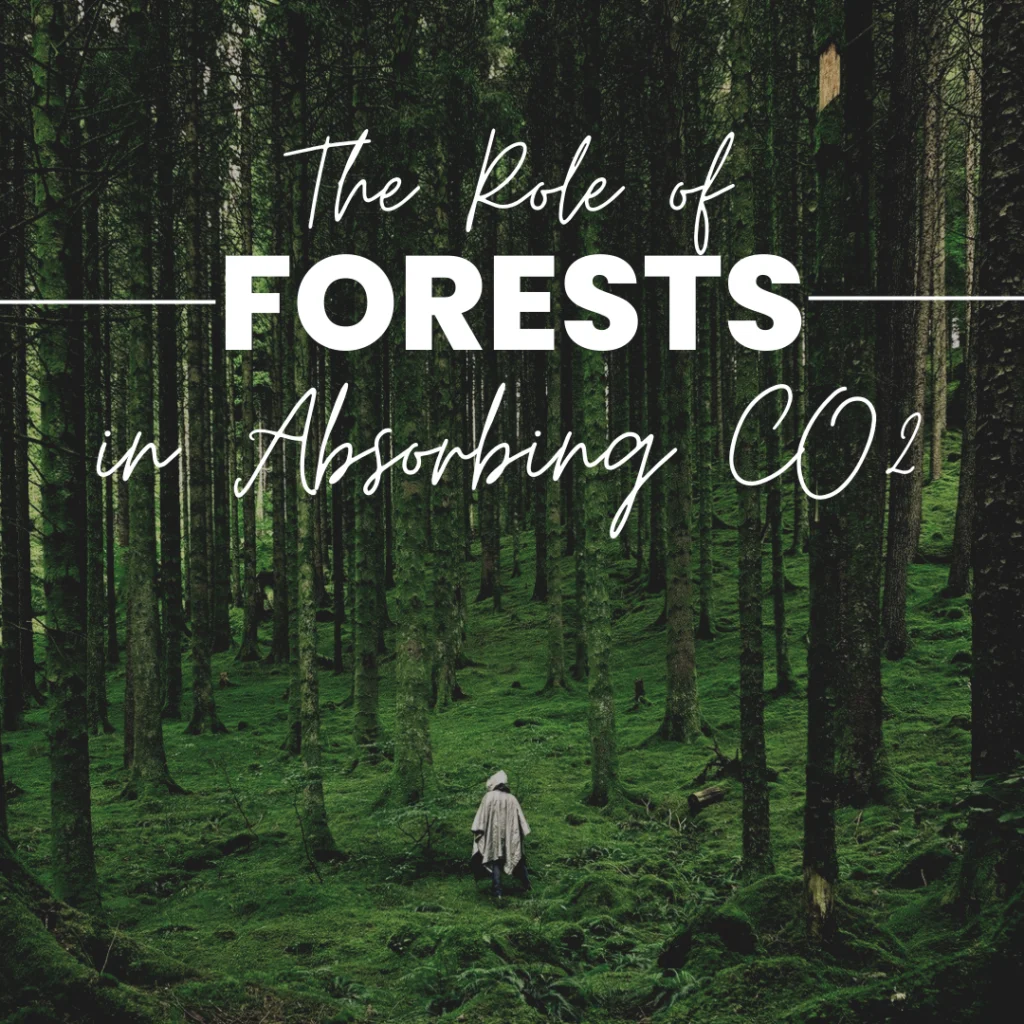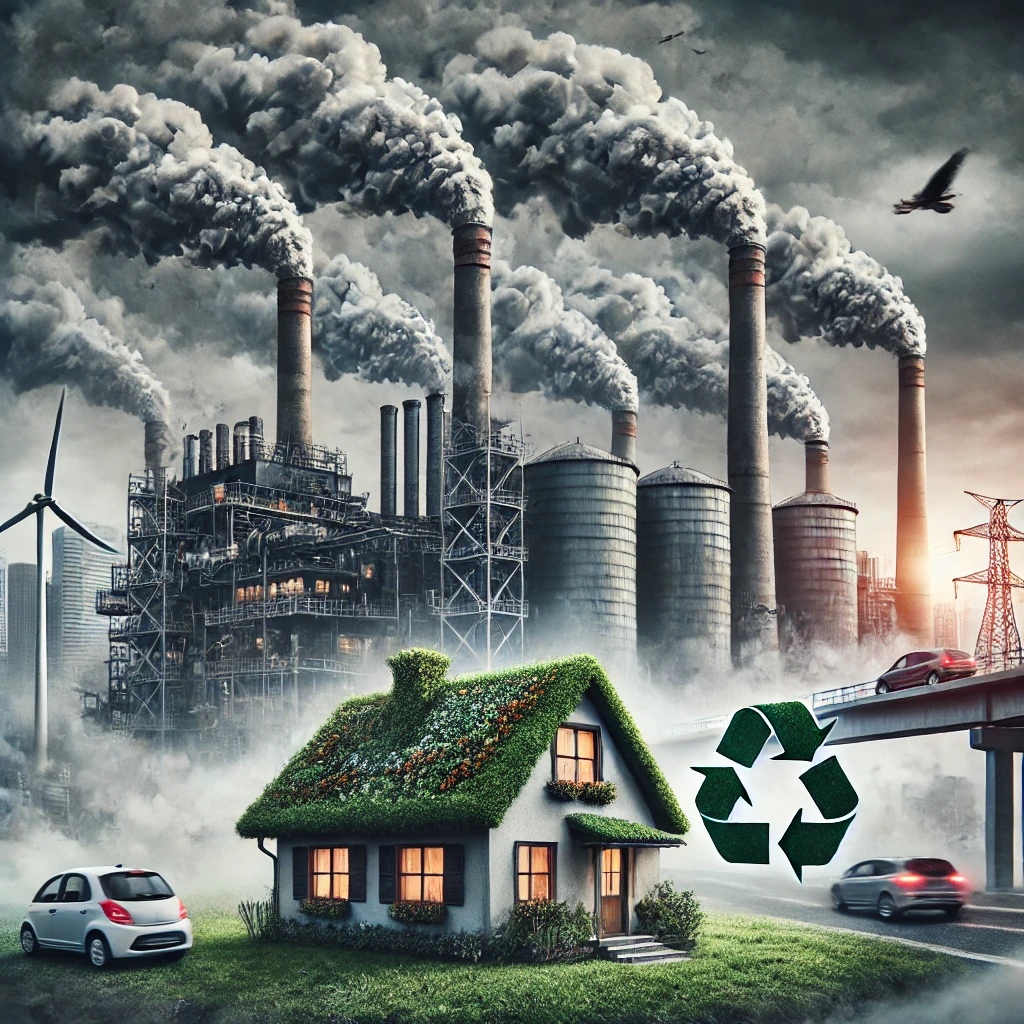What Consumes the Most CO2 on Earth?
Carbon dioxide (CO2) is a greenhouse gas that plays a pivotal role in climate change. While we often focus on how human activities release CO2, understanding what consumes the most CO2 on Earth is critical for developing strategies to mitigate its effects. The Earth has natural systems, known as carbon sinks, that absorb and store CO2. These include forests, oceans, and soil. But which of these absorbs the most?
Introduction to CO2 Absorption
CO2 is a natural part of Earth’s carbon cycle, but human activities have increased its concentration in the atmosphere. This excess CO2 contributes to global warming by trapping heat. To balance this, Earth has several systems that absorb CO2, helping to reduce its presence in the atmosphere. Understanding what absorbs CO2 is crucial in the fight against climate change.
Natural Carbon Sinks: Earth’s CO2 Consumers
The Role of Forests in Absorbing CO2:

Forests, especially tropical rainforests, play a crucial role in absorbing carbon dioxide. Through photosynthesis, trees absorb CO2 and convert it into oxygen, providing a natural way to regulate atmospheric CO2 levels. Reforestation efforts are essential for enhancing these natural sinks.
Oceanic Carbon Sequestration:
The oceans are the largest carbon sink on Earth, absorbing roughly one-third of the CO2 emitted by human activities. To better understand how emissions affect our planet, read our detailed article on What is the Carbon Footprint and What is it For?. This occurs through a combination of physical processes, such as the dissolution of CO2 in water, and biological processes like photosynthesis carried out by marine plants and algae.
Soil as a Carbon Sink:
Soil can also absorb significant amounts of carbon. Organic matter, such as decomposed plants, helps store CO2 underground. The health of the soil is a vital factor in its capacity to act as a carbon sink, and practices like regenerative agriculture can enhance this ability.
The Oceans: Earth’s Largest CO2 Consumer
The Ocean’s CO2 Absorption Mechanism:
The world’s oceans absorb CO2 through both physical and biological processes. Cold water absorbs CO2 more efficiently than warm water, making polar regions particularly important in this process. Once CO2 is absorbed, it can be stored for centuries in deep ocean layers.
Phytoplankton and Their Role in CO2 Uptake:
Phytoplankton, microscopic plants in the ocean, contribute significantly to carbon sequestration through photosynthesis. They absorb CO2 and, when they die, their carbon-rich bodies sink to the ocean floor, trapping CO2 for long periods.
Forest Ecosystems: Powerful CO2 Absorbers
The Importance of Reforestation:
Forests, especially tropical rainforests like the Amazon, are powerful absorbers of CO2. Reforestation and afforestation (planting new forests) are essential strategies to increase the amount of CO2 absorbed by trees.
How Trees Absorb CO2 Through Photosynthesis:
Trees and plants absorb CO2 through the process of photosynthesis. The carbon absorbed is stored in their biomass, such as trunks, branches, and leaves, making forests vital in managing atmospheric CO2 levels.
Agricultural Practices and Soil Sequestration
Regenerative Agriculture as a CO2 Mitigation Strategy:
Regenerative agriculture practices, such as cover cropping and minimal tillage, enhance soil’s ability to store carbon. These practices not only improve soil health but also increase its capacity to act as a carbon sink.
The Role of Healthy Soils in CO2 Absorption:
Healthy soils rich in organic matter are more efficient at storing carbon. Increasing soil organic content through sustainable farming methods can significantly enhance the Earth’s natural ability to absorb CO2.
The Impact of Land Use and Human Activities
Deforestation and CO2 Emissions:
Deforestation releases stored carbon into the atmosphere, exacerbating the problem of excess CO2. Protecting forests is essential to prevent further emissions and maintain these critical carbon sinks.
The Role of Urban Planning in CO2 Management:
Urban areas contribute significantly to CO2 emissions, but smart city planning and green infrastructure can help reduce emissions and increase CO2 absorption through green spaces, trees, and rooftop gardens.
The Effectiveness of Artificial Carbon Sinks
Carbon Capture and Storage (CCS) Technologies:
Artificial carbon sinks, such as CCS, involve capturing CO2 emissions from industrial sources and storing them underground. This technology has the potential to greatly reduce atmospheric CO2 levels, but it remains expensive and is still being developed.
Innovations in Carbon Sequestration Techniques:
New technologies, such as direct air capture, offer innovative solutions to CO2 emissions. These technologies capture CO2 directly from the air and store it safely underground or use it in industrial processes.
The Future of CO2 Consumption
Policy Initiatives for Enhancing CO2 Absorption:
Governments around the world are implementing policies to enhance CO2 absorption. Initiatives like carbon taxes, emissions trading, and reforestation programs are essential to increase the Earth’s ability to absorb CO2.
Global Efforts to Reach Net Zero:
Many countries are working towards net zero emissions, where the amount of CO2 emitted is balanced by the amount absorbed. Achieving this goal will require a combination of natural carbon sinks, artificial technologies, and policy measures.
Case Studies in CO2 Reduction
Reforestation Projects in the Amazon:
Reforestation projects in the Amazon rainforest have shown promising results in increasing CO2 absorption. These efforts not only help absorb CO2 but also restore ecosystems and biodiversity.
Ocean-Based CO2 Sequestration Programs:
Ocean-based programs, such as seaweed farming and phytoplankton stimulation, are emerging as viable methods for enhancing the ocean’s natural CO2 absorption capacity.
H3: FAQs: Common Questions About CO2 Consumption
What is the largest carbon sink on Earth?
The oceans are the largest carbon sink, absorbing about 30% of the CO2 produced by human activities.
How do forests absorb CO2?
Forests absorb CO2 through photosynthesis, where trees take in CO2 and convert it into oxygen and carbon, which is stored in their biomass.
Can soil absorb CO2?
Yes, soil is a significant carbon sink, particularly when managed through regenerative agriculture and other sustainable practices.
What is the role of phytoplankton in CO2 absorption?
Phytoplankton, microscopic plants in the ocean, absorb CO2 through photosynthesis and play a crucial role in the marine carbon cycle.
Are artificial carbon sinks effective?
Artificial carbon sinks like carbon capture and storage (CCS) can be effective, but they are still in development and require further investment and innovation.
How does land use affect CO2 levels?
Land-use changes, such as deforestation and urbanization, can release large amounts of CO2 into the atmosphere. Sustainable land management can help mitigate these emissions.
Conclusion: Working Toward a Carbon-Neutral Future
In conclusion, the Earth’s natural systems, particularly oceans, forests, and soils, play a crucial role in consuming CO2. Protecting and enhancing these systems is essential for mitigating climate change. Additionally, artificial carbon sinks and innovative technologies are becoming vital tools in reducing CO2 levels. With concerted global efforts, reaching a carbon-neutral future is possible.



